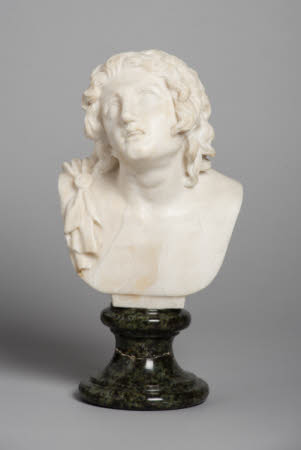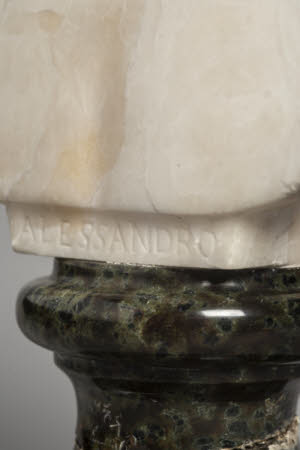The Dying Alexander the Great (356 – 323 BC)
Category
Art / Sculpture
Date
Unknown
Materials
Alasbaster
Measurements
270 mm (Height)
Order this imageCollection
Chirk Castle, Wrexham
NT 1171284.2
Summary
Alabaster sculpture, The Dying Alexander the Great (356 – 323 BC). Bust. The identification of the subject as Alexander comes from Plutarch. The original is in the Uffizi, Florence and belonged to the Medici in Florence by 1579 when Giambologna was commissioned to fit it onto a statue. The earliest replica was made in porphyry in the sixteenth century. Queen Christina commissioned a bronze copy from Soldani in 1681. By 1781 there was a plaster cast in the Royal Academy, London. One of two eighteenth-century alabaster busts on green marble socles of 'ALESSANDRO' after the antique Belvedere Antinous and Dying Alexander prototypes.
References
Haskell and Penny 1981: Francis Haskell and Nicholas Penny, Taste and the Antique, The Lure of Classical Sculpture 1500 - 1900, New Haven and London, 1981, 2








